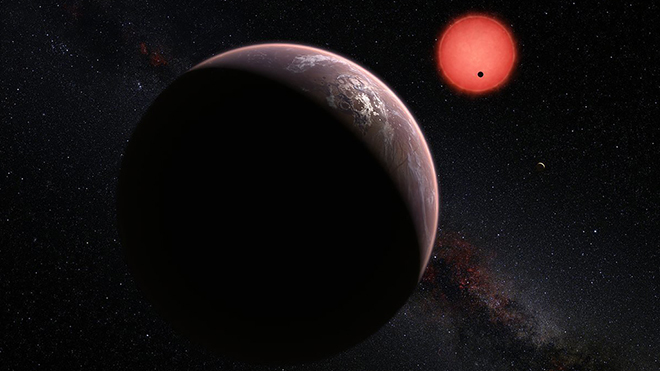Middle School | Daily Do
How can we tell if a planet is habitable without visiting that planet?

Lesson Snapshot
Students analyze and interpret data from our solar system and the TRAPPIST-1 System and look for patterns among the systems that can be used to identify a cause-and-effect relationship between star temperature and habitable zone location. Students engage with text and video to learn that the boundaries of the habitable zone are determined by the highest and lowest temperatures at which water can exist as a liquid.
Students use a model to help explain how TRAPPIST-1 (star) light transmitted through TRAPPIST-1e’s atmosphere and gathered by the James Webb Space Telescope reveals the composition of the atmosphere. Students use gathered evidence and scientific information from NASA-produced articles and videos to construct an explanation of how we can tell if TRAPPIST-1e is habitable without actually visiting that planet.
Click the Download PDF button above for the complete Lesson Plan.
Materials
Student Materials
Per Pair
- Tablet or computer
- NASA: Exoplanet Catalog TRAPPIST-1e
- NASA: Solar System Exploration
- NASA: What is the habitable zone or “Goldilocks zone”?
Per Small Group (2 to 4 students)
- Flashlight
- Red transparent film square (5.0 cm x 5.0 cm)
- Green transparent film square (5.0 cm x 5.0 cm)
- Blue transparent film square (5.0 cm x 5.0 cm)
- Additional colors of transparent film may be used, but are not necessary.
- Prism may be used but is not necessary.
- Sheet of white paper (8 ½ in x 11 in)
Teacher Materials
- Hunt for Planet B Slide Deck
- NASA: What Is the Habitable Zone? (video)
- NASA: The Search for Life (optional article)
- How Webb Will Study Atmospheres of Exoplanets (video)
- Prism (optional)
- Scholastic: Habitable Planet clip (from The Hunt for Planet B) found on the web page Scholastic Discovering the Universe (video)
Optional Teacher Resources






